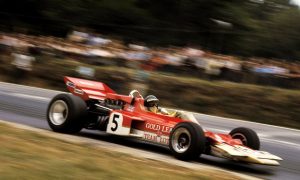
© Renault F1
THE DESIGN STAGES
“It tends to be an evolution of the previous car”, Renault chassis technical director Nick Chester told F1i. “We start to work with CFD, then the wind tunnel then it gets passed through to stress and then design. But in stress and design if it is hard to achieve a wing that works it goes back to CFD. Sometimes, we pass designs through the stress department for Finite Element Analysis quite early so a feasibility study can be done to see if we have to change geometry.
“For the mechanical components, which don’t have a direct aero impact, there is still significant optimisation. For example the internal rear suspension, which is installed in the gearbox, is iterated. The designer will come up with a scheme in CAD and will pass it to the stress department for FEA to study it and say we need to make this bit stronger or this bit can be lighter. It can go back to the designer and back to FEA and you will do that circle to save weight and improve stiffness. There is a design loop in all areas.”

© Renault F1
RIG TESTING
The computer stress analysis remains a virtual method that needs to be validated with dyno tests re-creating racing conditions as faithfully as possible.
F1 teams’ factories are equipped with several types of dyno such as suspension loading rigs, gearbox dyno, engine dyno, etc.
Part failures are often a result of small details that may not be picked up in design so rig testing is extremely important to highlight deficiencies before track running.
Once a shape and stiffness level has been theoretically defined, the digital drawing will be transformed into a veritable part, as we'll see the fourth and final chapter of our series.
The birth of a Formula 1 car: 1. The conceptual work — 2. The production schedule — 3. The design — 4. The production

© XPB Images






